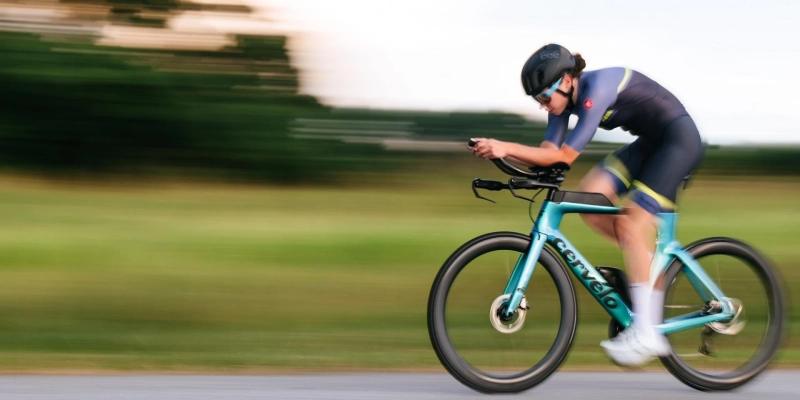Triathlon is an exciting and rewarding endeavor that brings fulfillment and joy to many types of individuals – from recreational hobbyists to highly-competitive athletes.
Unlike single-discipline sports (like swimming or running) where the training is very one-dimensional, triathlon allows athletes to mix up their training in three different sports, namely swimming, cycling, and running.
Given the three-discipline dynamic of triathlon and having to train and race across these three different sports, there's a lot of gear that comes along with it.
If you're a beginner, you may be wondering what all you need to successfully complete (or compete in) a triathlon.
To help guide you in the right direction, below are some of the most important considerations for essential triathlon gear and equipment.
This is just a beginner’s guide to triathlon gear. To learn more about more types of triathlon gear and equipment as well as training and coaching resources, visit Better Triathlete, a leading triathlon blog and training website.
1. Tri Suit
Think of a tri suit as a form-fitting single piece of apparel that’s quick-drying, high-stretch/high-flex, and easy to move in. While a tri suit is not required for a triathlon, it can be a useful investment when it comes to figuring out what to wear.
Like a wetsuit but without the neoprene thickness, a tri suit is a lot similar to a one-piece bathing suit but is made to move well on the bike and run, and of course the swim leg of a triathlon.
Some tri suits have a couple of back pockets to stash gels and fuel, making them useful for long-course triathlons, like Ironman.
As an alternative to a tri suit, athletes can also wear tri shorts (which are tight-fitting, fast-drying shorts that often have a chamois pad for cycling) and a tri top (which is much like a moisture-wicking cycling jersey but with cut-off sleeves).
This two-piece alternative works just as well as a tri suit and can be worn under any wetsuit.
2. Wetsuit
Also not a requirement but often preferred for most triathletes (especially those who are not proficient swimmers) a wetsuit makes the swimming leg of a triathlon much easier.
In addition to providing a thermal barrier for cold water, the neoprene that wetsuits are made of provides extra buoyancy and floatation.
This helps athletes stay streamlined more easily while helping them go faster in water.
In long-course triathlons, like 70.3/half-Ironman and full-Ironman races where the swim distance is between 1 and 2 miles, a wetsuit can be hugely beneficial.
But when it comes to short-course triathlons, like Sprint and Olympic distances where the swim is between 750 and 1,500 meters, a triathlon wetsuit is less important.
Because these swims only take between 15-30 minutes for most athletes, it’s a small portion of the overall race.
3. Road Bike
Having a road bike with narrow tires intended for paved surfaces is an important piece of equipment needed to race in a triathlon.
If you’re aiming to participate in the sport for many years, you could invest in an actual triathlon bike or time trial bike, but these more specialized bikes are not required.
Unlike a road bike with traditional drop bars, triathlon bikes put riders in a more aerodynamic position and often come equipped with aero bars.
If you stick with a traditional road bike for your triathlon endeavors, consider purchasing clip-on aero bars to affix to the handlebars.
Aero bars can be easily attached to any drop-bar handlebars and enable you to get into the aero position, which is much fast and more efficient for triathlons.
4. Bike Helmet
In addition to having a road bike or triathlon bike, you’ll also need a well-fitting helmet. But when it comes to triathlon, you don’t want just any helmet.
You achieve greater aerodynamics and speed by opting for an aero helmet (or some cases called a “triathlon helmet”).
Compared to standard road or mountain bike helmets, aero helmets are designed to minimize resistance from the wind. In simple terms, aero helmets are performance-minded bike helmets that can help you save significant time on the bike leg, which is the longest leg of the triathlon.
There’s been considerable research invested in the benefits of aero helmets. One study found that the aerodynamic shape and head position of the helmet can dramatically improve drag resistance and thereby increase speed and efficiency.
Because the helmet is the uppermost part of a cyclist, it is the one piece of triathlon gear that’s highly susceptible to drag and overall wind resistance.
5. Running & Cycling Shoes
Footwear for triathlon is two-fold. Not only do you need a good pair of running shoes but most athletes can benefit from cycling shoes as well.
Cycling shoes have cleats that attach to the ball of the bottom soles which clip into the pedals. This clip pedal type is designed to maximize pedal stroke efficiency and power output by allowing cyclists to generate momentum on the upstroke of the pedal.
Any type of cycling shoe will work, but some triathletes prefer triathlon cycling shoes because they have a simplified strap system that allows for ease of wear.
Triathlon running shoes are also uniquely designed for simplistic wear; they’re easy to put on and take off, which is crucial for efficient transitions from bike to run.
What makes certain types of running shoes ideal for triathlon is their lacing system. Some use elastic laces that can be easily tightened with a draw strap design.
However, these elastic laces can be added to just about any type of running shoe, so it’s best to choose a pair that works best for you and your feet.


